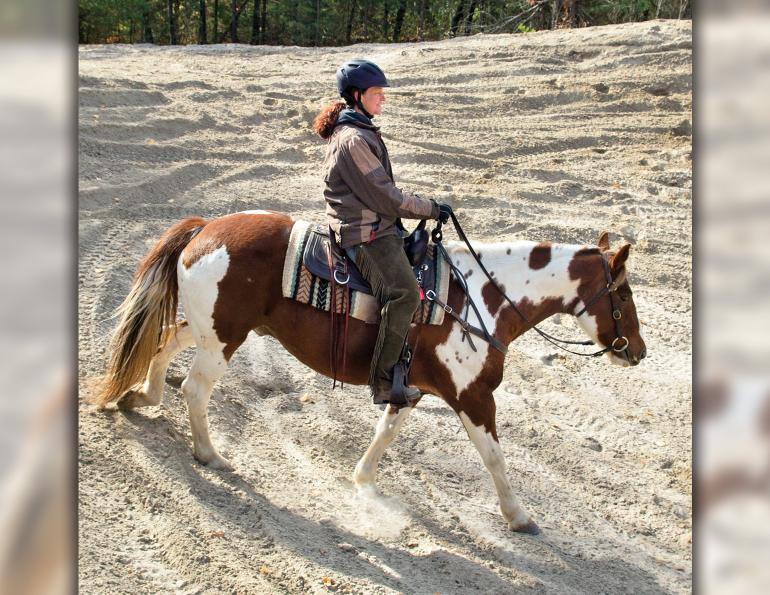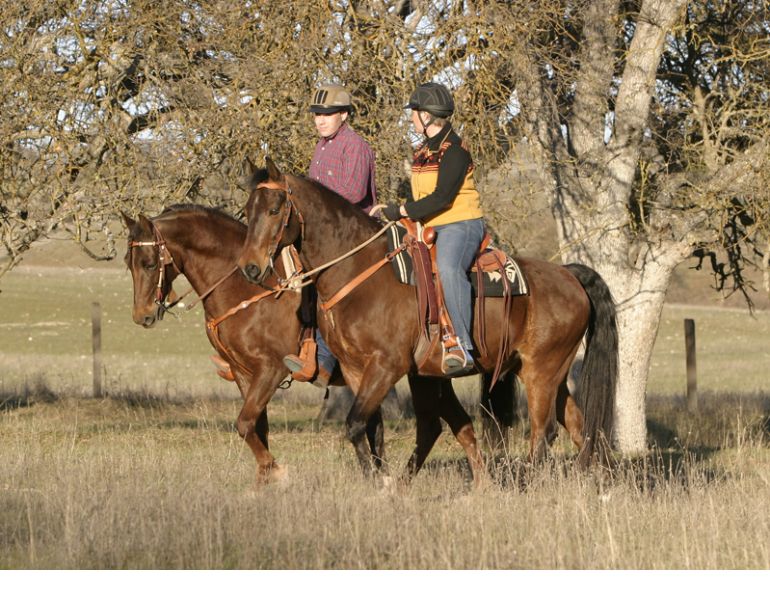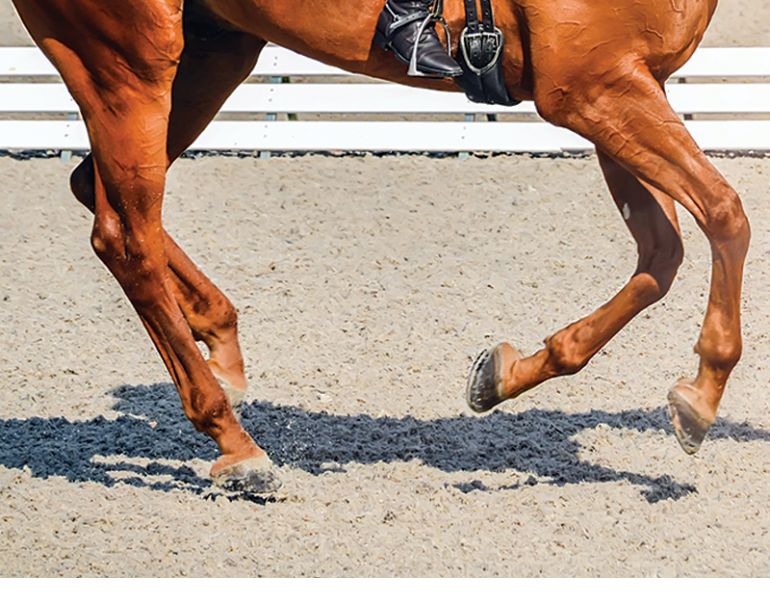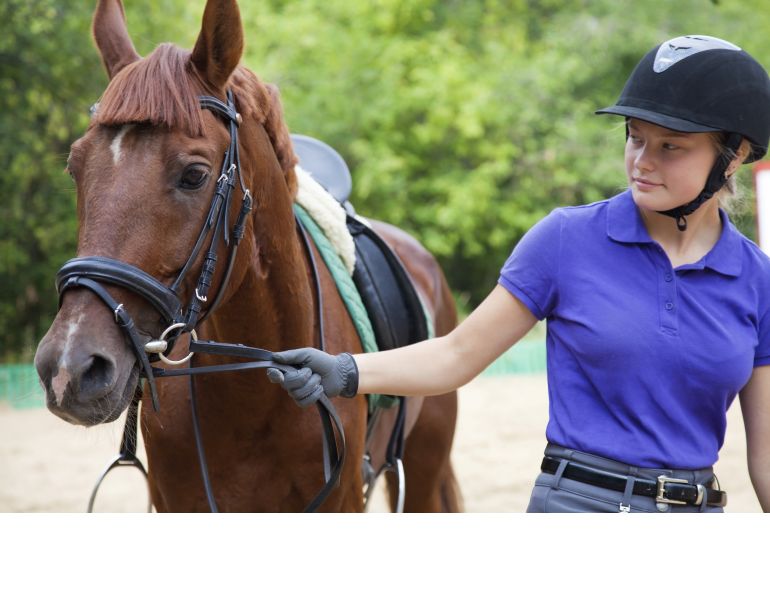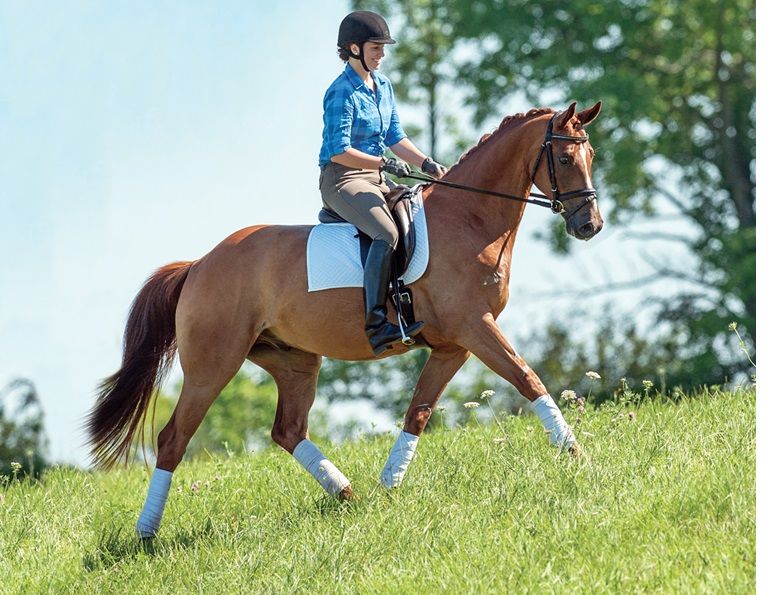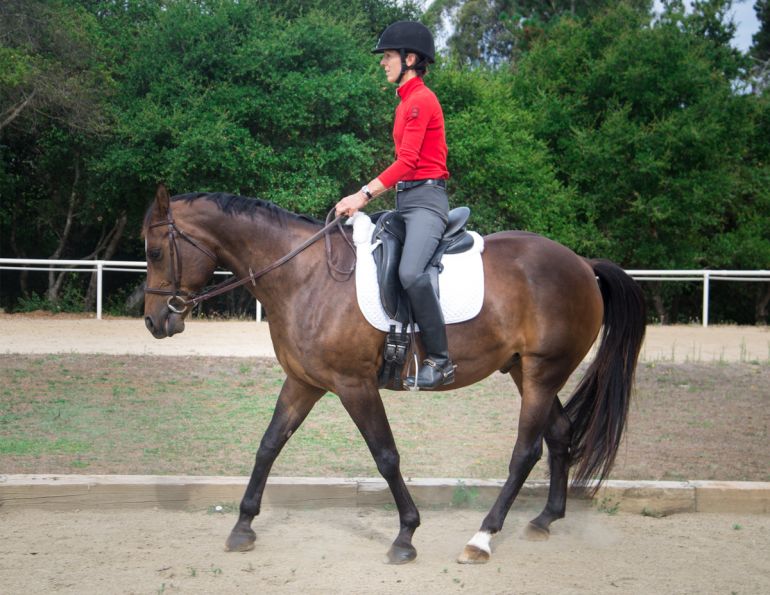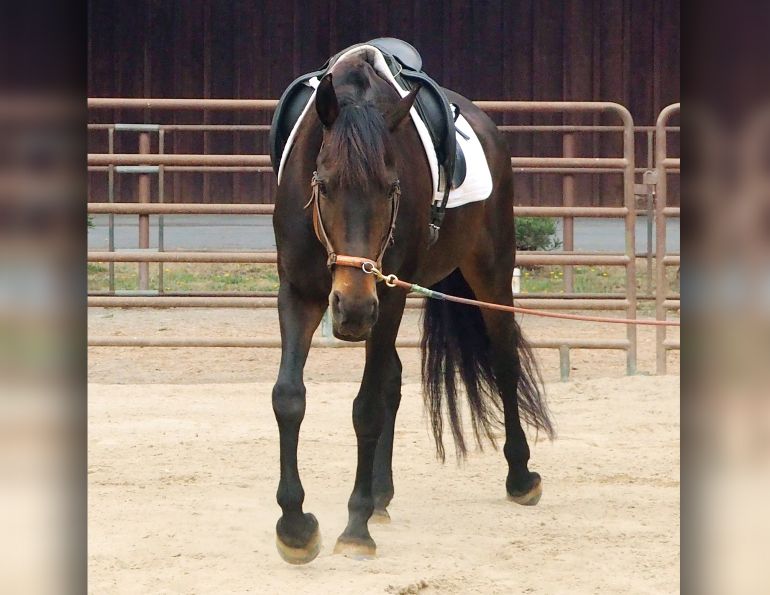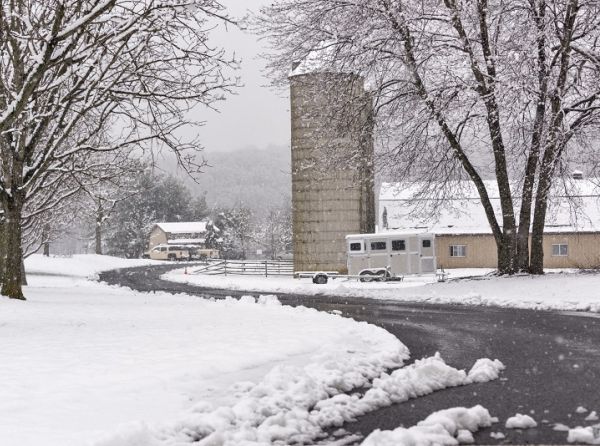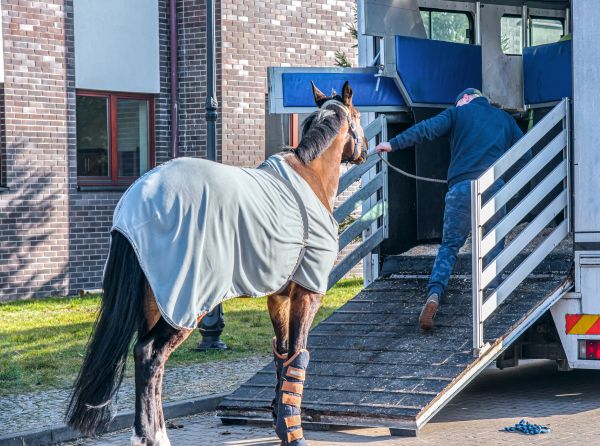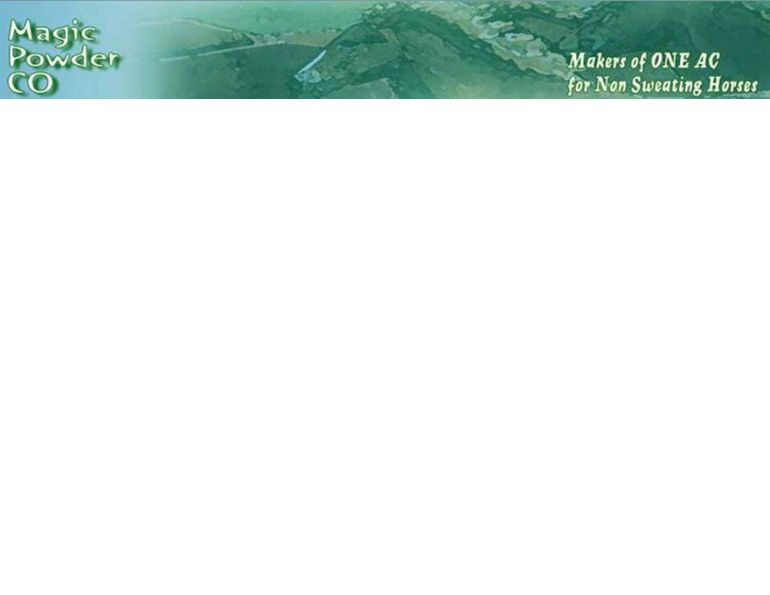Define your goals to develop a training plan.
By Jec A. Ballou
While hill training is widely accepted as important for building strength, its actual benefits rely on answering the question: What is the goal for this individual horse?
The potential value of athletic activities is determined by applying them relevantly. This is what leads to prescriptions for reps, duration, and intensity levels of the activity. When a vet or trainer suggests that hill training will benefit a particular horse, the owner needs to ask: What degree of slope? What speeds? What activities should be done on the slope? How many reps?
In the case of increasing strength, there is no guarantee of results by making your horse occasionally climb up inclines that leave him winded and sweaty. By itself, traipsing around steep terrain without a clear plan often brings cardiorespiratory improvement without intended strength gains. This is due to hills being too steep and encouraging poor form and/or over-exertion, insufficient repetitions, unproductive work-to-rest ratios, or working past fatigue.
In fact, depending on their physical challenge, climbing steep hills often contributes to asymmetrical movement patterns and requires the horse to work in an anaerobic metabolic rate that does not support the type of muscle fibre recruitment and strength-building sought for bettering locomotion and balance. Further, eccentric muscle contractions responsible for descents produce more metabolic waste (acidic build-up, “burning” sensation) than other types, which leads to poor function and recovery.
In terms of strength training, hills are generally used to serve three roles. Determining which role applies to your horse will help you devise a plan or find modifications if you lack access to slopes. It will also help avoid the false impression that sporadic hilly trail rides will deliver measurable propulsive and locomotive gains. These roles include movement therapy, gymnastic strength, and sport-specific conditioning.
Related: Walking Workouts for Your Horse
Movement Therapy
Exercising horses on mild slopes, whether mounted or unmounted, requires neuromuscular coordination, increased joint flexion, balance adjustments, core stabilization, and proprioceptive gains. It is used for these reasons in rehab settings, early conditioning phases, and to correct poor movement patterns. In these scenarios, hill training relies on parameters. These include the following:
- A mild slope; a gentle uprising that progressively gains height; terrain rises six to eight vertical feet over 100-foot distance (1.8 to 2.45 metres over a 30.5 metre distance). Many driveways and pastures fit the description.
- Short exercise bouts, from 10 to 20 seconds at a time. Bouts are repeated an appropriate number of reps based on the vet’s or therapist’s assessment.
- Exercise performed at low intensity, mostly at walk. Routines can be performed either in-hand or ridden.
- Exercise routines are performed two to three times weekly.
- Terrain is traversed in a manner of ways — various figures, sideways, varying speeds up and down slope face, etc.
- Exercises of this nature include backing up slope, walking sideways across slope face, walk-to-stop transitions while walking down slope.
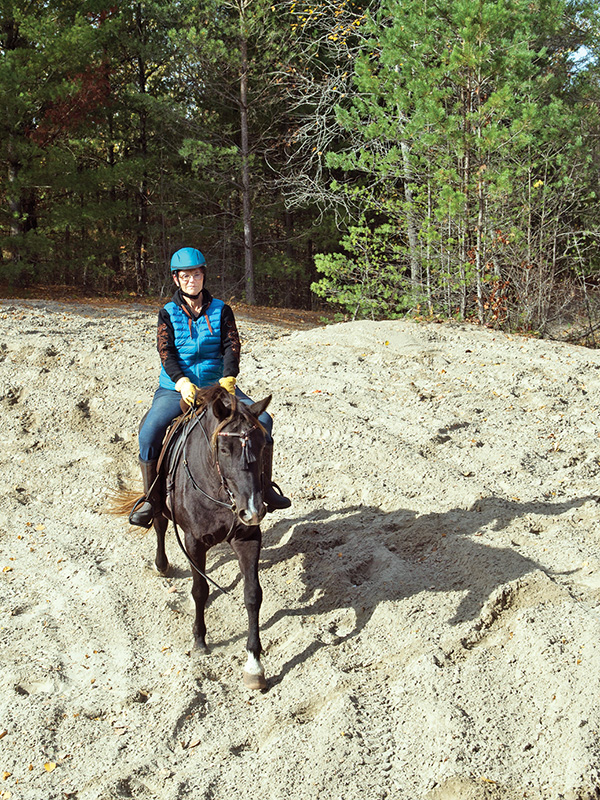
Mild slopes provide movement therapy and are beneficial for early conditioning and rehab. Exercises should be performed mainly at walk two or three times a week. Photo: Clix Photography
Gymnastic Strength
Commonly used to improve hindquarter strength including stifles, hills offer low-impact resistance training. Traveling up gradients targets the horse’s extensor muscle chain while traveling down slopes activates the flexor chain. Terrain of this sort can add function and power to the horse’s locomotion, improving his ability to perform collected gaits, fatigue resistance, and injury avoidance. The parameters for hill training used in this capacity include:
- A moderate slope; horse needs to use shorter, more powerful strides to ascend. Heart and respiratory rate will increase notably after a few hundred meters. Terrain rises 8 to 10 vertical feet over 100-foot distance (2.45 to 3 metres over a 30.5 metre distance).
- Exercise efforts of one to two minutes with multiple efforts throughout the sessions. Number of repetitions and rest periods between each effort are determined by current fitness, age, goals.
- One session of this type every five to seven days.
- Exercises are performed at whichever gait is most aerobically efficient; the goal is strength gains as opposed to cardiorespiratory improvement. If your horse is gasping for air, blood and oxygen supply has diminished to his muscles and they are not able to get stronger; you will need to downshift to a slower pace.
- Exercises that fit this role include repeated intervals of ascending a slope in extended walk for one to three minutes, then descending in collected walk for equal time; riding 20-metre circles on a slope face for three-minute intervals repeated an appropriate number of times; trotting up slope and walking back down; riding a serpentine while ascending a sustained slope of two to three minutes.
Related: Adjust Your Horse Stretches to Make Progress
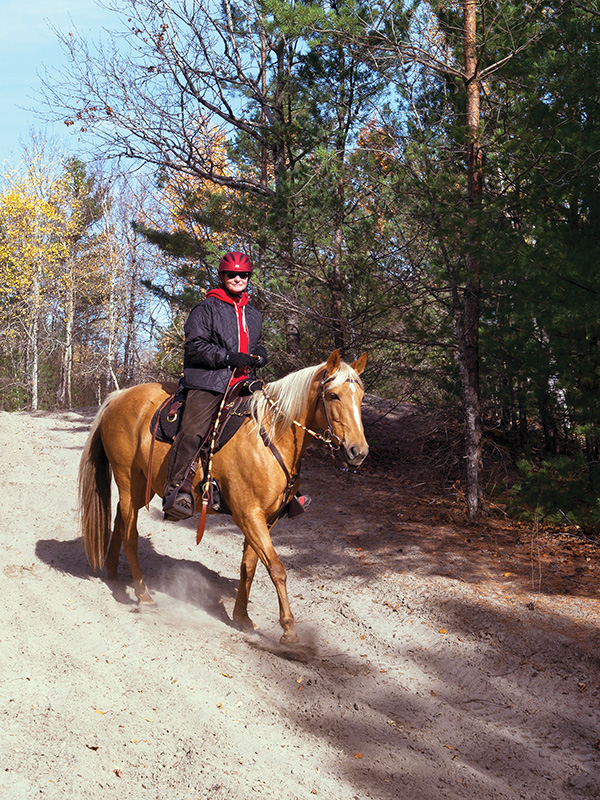
Typically used to improve gymnastic strength, moderate slopes require the horse to use shorter, more powerful strides to ascend and descend, and are ridden at the most aerobically efficient gait. Photos (above/below): Clix Photography
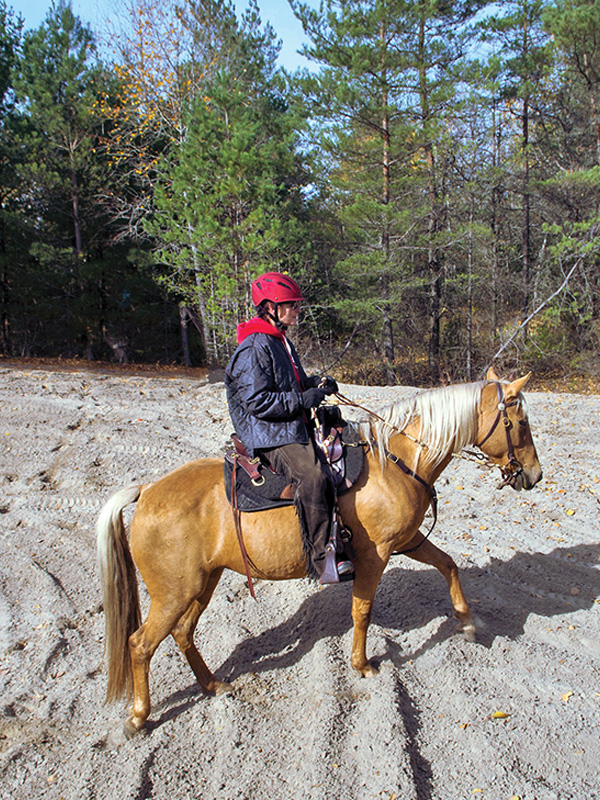
Sport-Specific Conditioning
While many riders assume they should be covering miles and miles of hills when their vet or trainer tells them to go out and strengthen their horse, this kind of conditioning is best suited for specific adaptations within certain disciplines. The primary outcome of prolonged repeated hill efforts is huge cardiovascular improvements. For most arena disciplines, however, strength is a greater need. Long repeated hills performed at higher rates of speed — fast trotting, galloping — are mostly beneficial for endurance horses, high level jumpers, three-day eventers, combined driving horses, and sports with taxing cardio demands.
Besides cardio, this kind of conditioning offers muscular stamina in addition to metabolic efficiency that comes from buffering waste from eccentric loading when descending slopes. Hill strategies in these cases rely on very clear prescriptions from a coach or proven conditioning schedule. The parameters of these efforts vary depending on each sport’s goals but are generally as follows:
- Hills longer than three minutes to ascend.
- Moderate and steep slopes are needed. A steep slope is one that requires automobiles to downshift to lower gears; terrain gains 15 to 20 vertical feet over 100-foot distance (4.5 to 6 metres over a 30.5 metre distance).
- The horse’s pulse and respiration recovery dictates time between each effort; cumulative time spent working up hills often measures 20 minutes or more; total descent time is twice that amount or more.
- One workout of this type every five days.
- All gaits are used, including gallop and downhill trotting.
Related: 9 Best Cavalletti Exercises
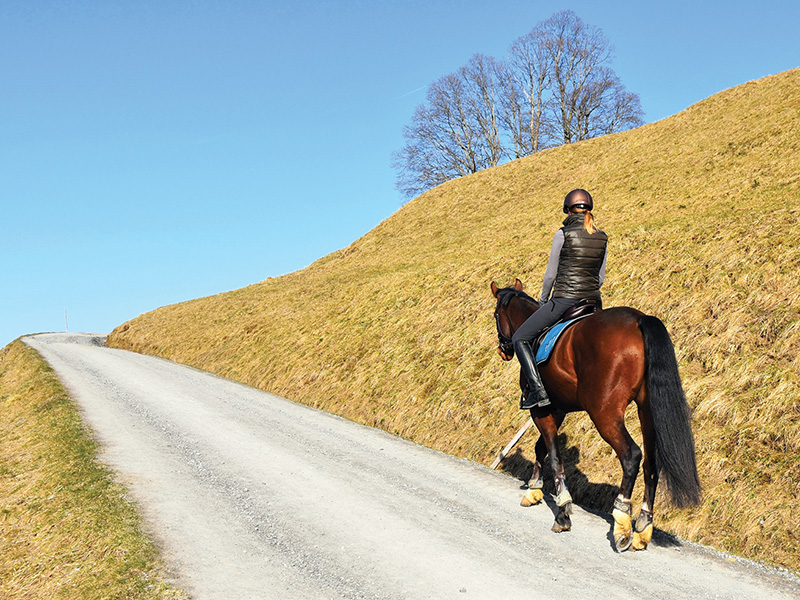
Prolonged repeated hill riding improves cardiovascular fitness. This type of conditioning, especially at higher rates of speed, is best suited for specific sports with taxing cardio demands such as endurance, high-level jumpers, and three-day eventers. Photo: Dreamstime/Jan Gajdosik
Most recreational horses need the type of training that applies to movement therapy or gymnastic strength as defined above. This involves a creative approach to the training stimulus. Remember, you are not guaranteed results by aimlessly trudging up and down a local mountain. Use your terrain imaginatively, utilizing a variety of figures and stride lengths, practicing both ridden and unmounted exercises. The key is to be clear with your purpose and consistent with your practice. Remember “strength” means different things for different horses. A 100-mile endurance horse will train very differently on hills than a Western Dressage horse or a show horse or an aging pleasure horse. Think mindfully about the dosages and duration of your hill training and be sure they serve your horse’s needs.
Related: Routines for a Balanced, Engaged Horse
Related: How Long Should I Train My Horse Daily
Main Photo: Clix Photography



